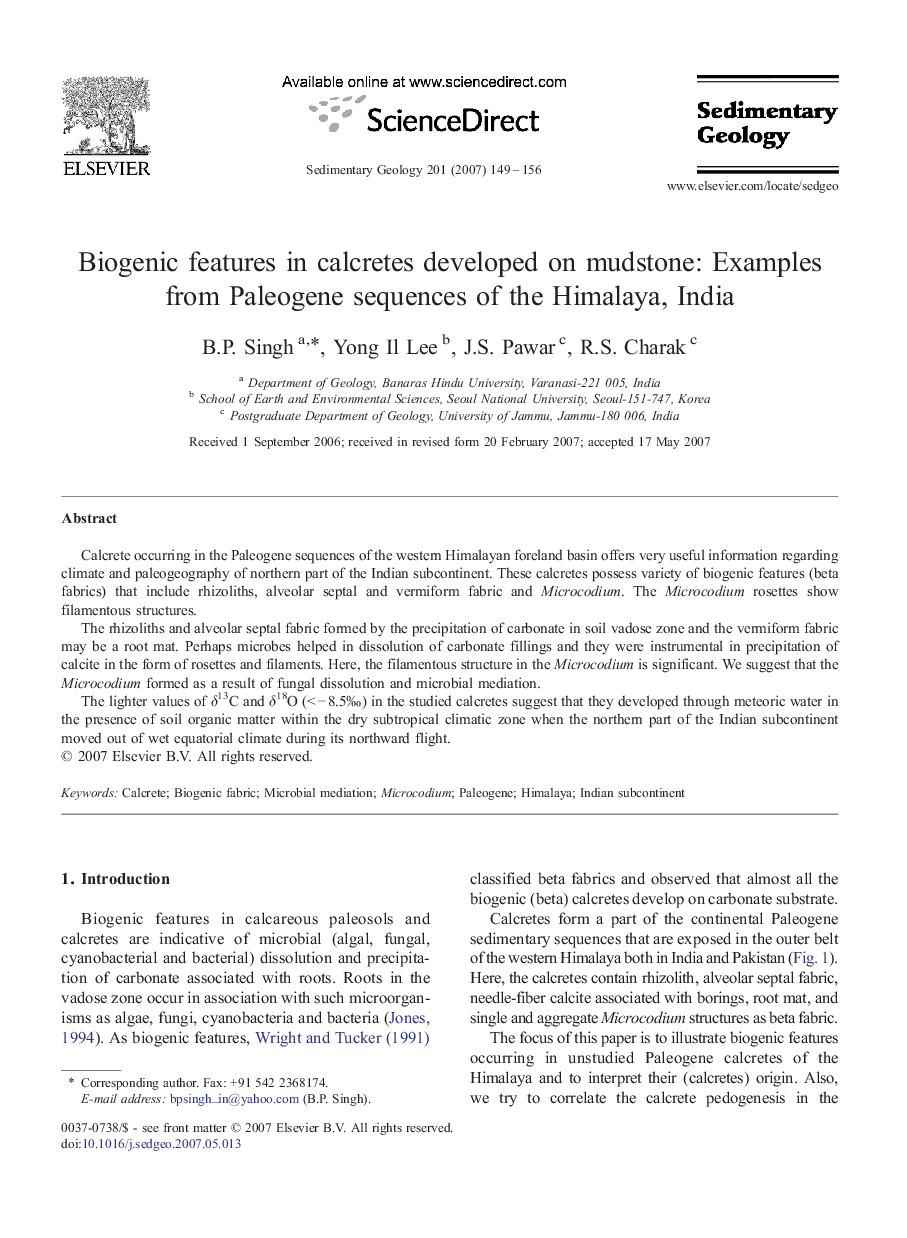| Article ID | Journal | Published Year | Pages | File Type |
|---|---|---|---|---|
| 4690782 | Sedimentary Geology | 2007 | 8 Pages |
Calcrete occurring in the Paleogene sequences of the western Himalayan foreland basin offers very useful information regarding climate and paleogeography of northern part of the Indian subcontinent. These calcretes possess variety of biogenic features (beta fabrics) that include rhizoliths, alveolar septal and vermiform fabric and Microcodium. The Microcodium rosettes show filamentous structures.The rhizoliths and alveolar septal fabric formed by the precipitation of carbonate in soil vadose zone and the vermiform fabric may be a root mat. Perhaps microbes helped in dissolution of carbonate fillings and they were instrumental in precipitation of calcite in the form of rosettes and filaments. Here, the filamentous structure in the Microcodium is significant. We suggest that the Microcodium formed as a result of fungal dissolution and microbial mediation.The lighter values of δ13C and δ18O (< − 8.5‰) in the studied calcretes suggest that they developed through meteoric water in the presence of soil organic matter within the dry subtropical climatic zone when the northern part of the Indian subcontinent moved out of wet equatorial climate during its northward flight.
